Pop Art AI Art Gallery
Pop Art
A 20th-century art movement that celebrated and critiqued the commercialization and commodificatione of modern life, using popular images and objects from everyday culture to create works that blurred the boundaries between high art and mass culture.
Today AI generated programs marvel the world with unseen images of all kind. Generated from thousands and thousands of public images with unseen results. Adaptive or transformative. We use transformative.
Here a variation on sun and moon transformative generated images, based on the style of Pop artists.
Enjoy!
PS
The painting in featured image is transformative fictious and AI transformative generated as well.
Sun and moon
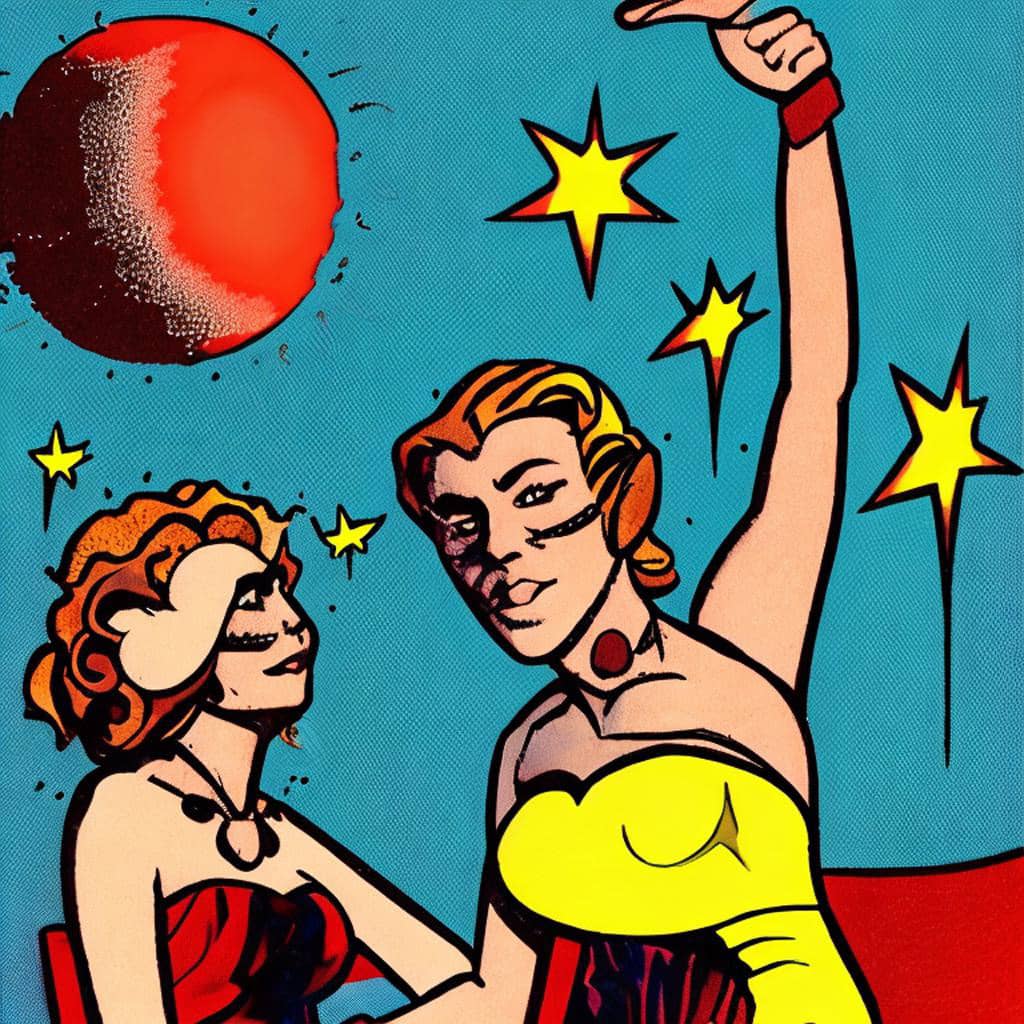
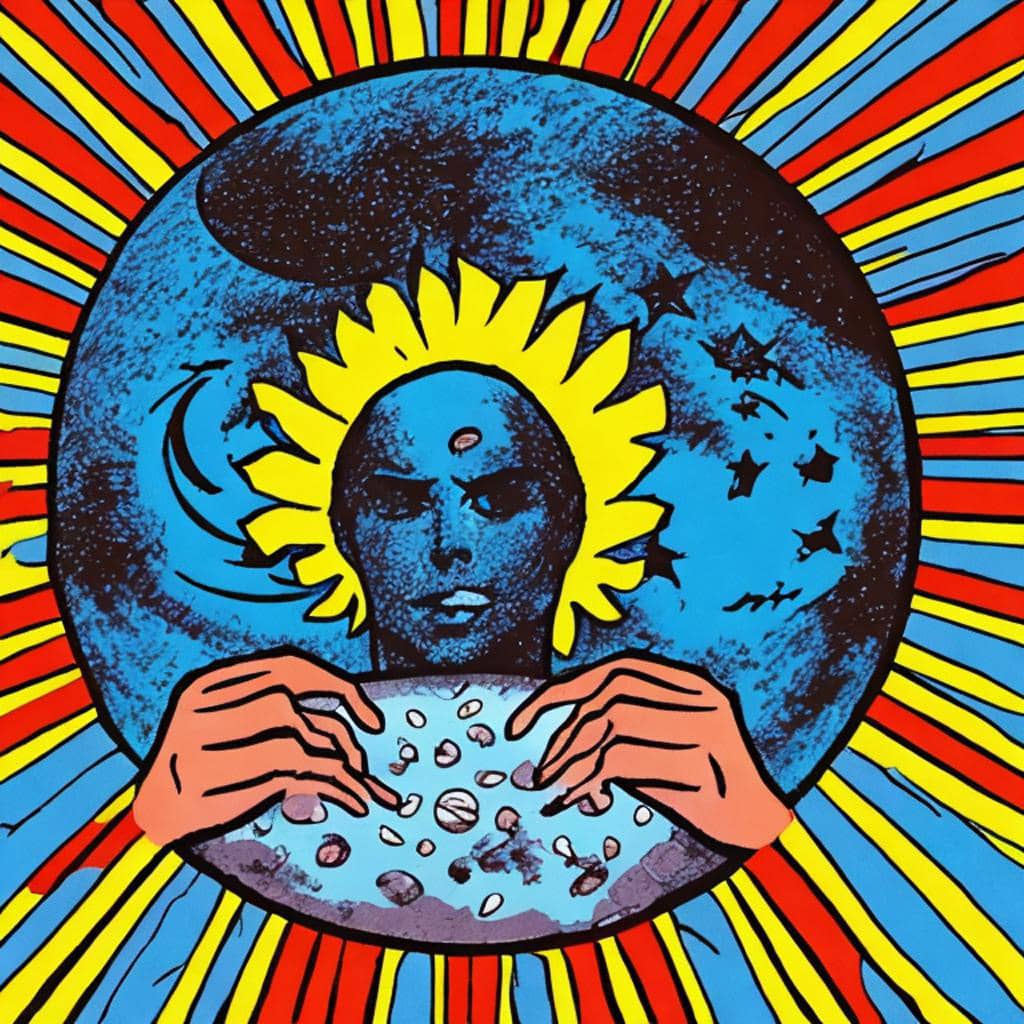
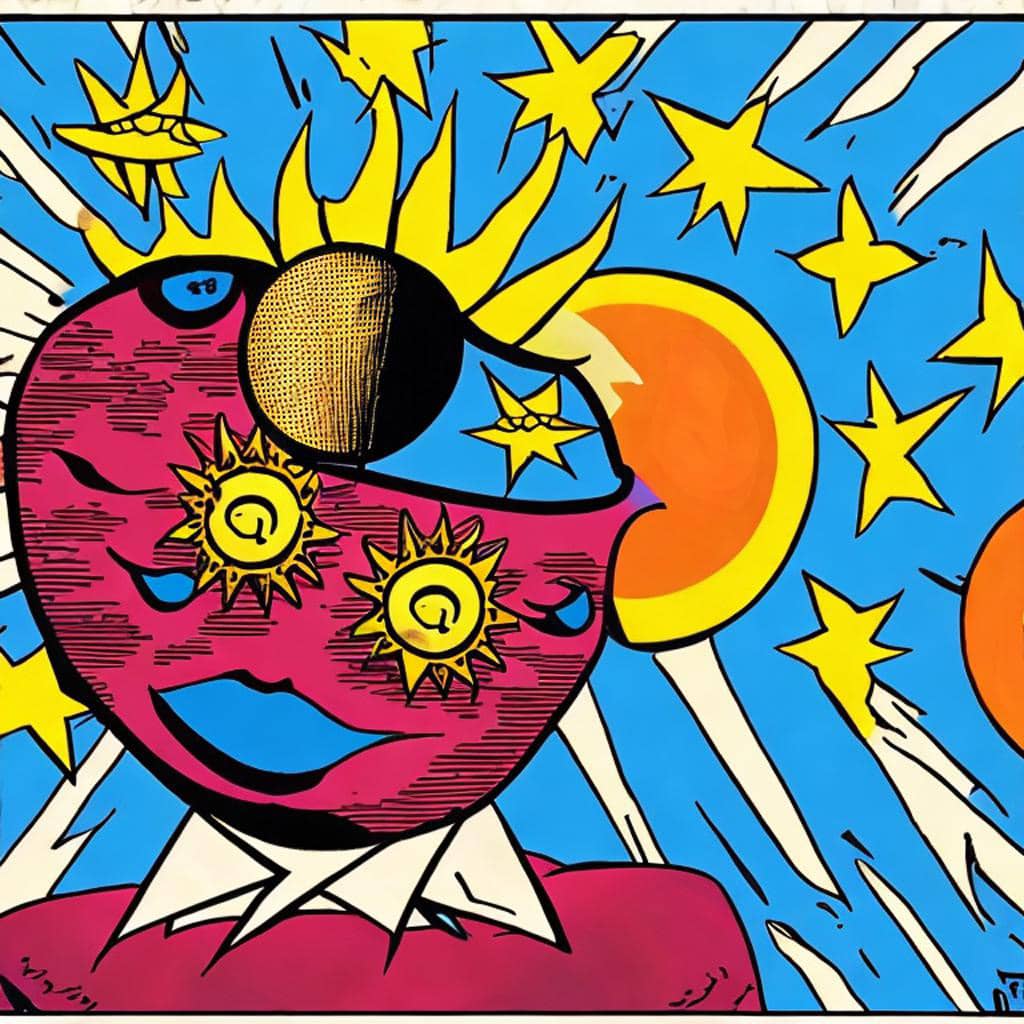
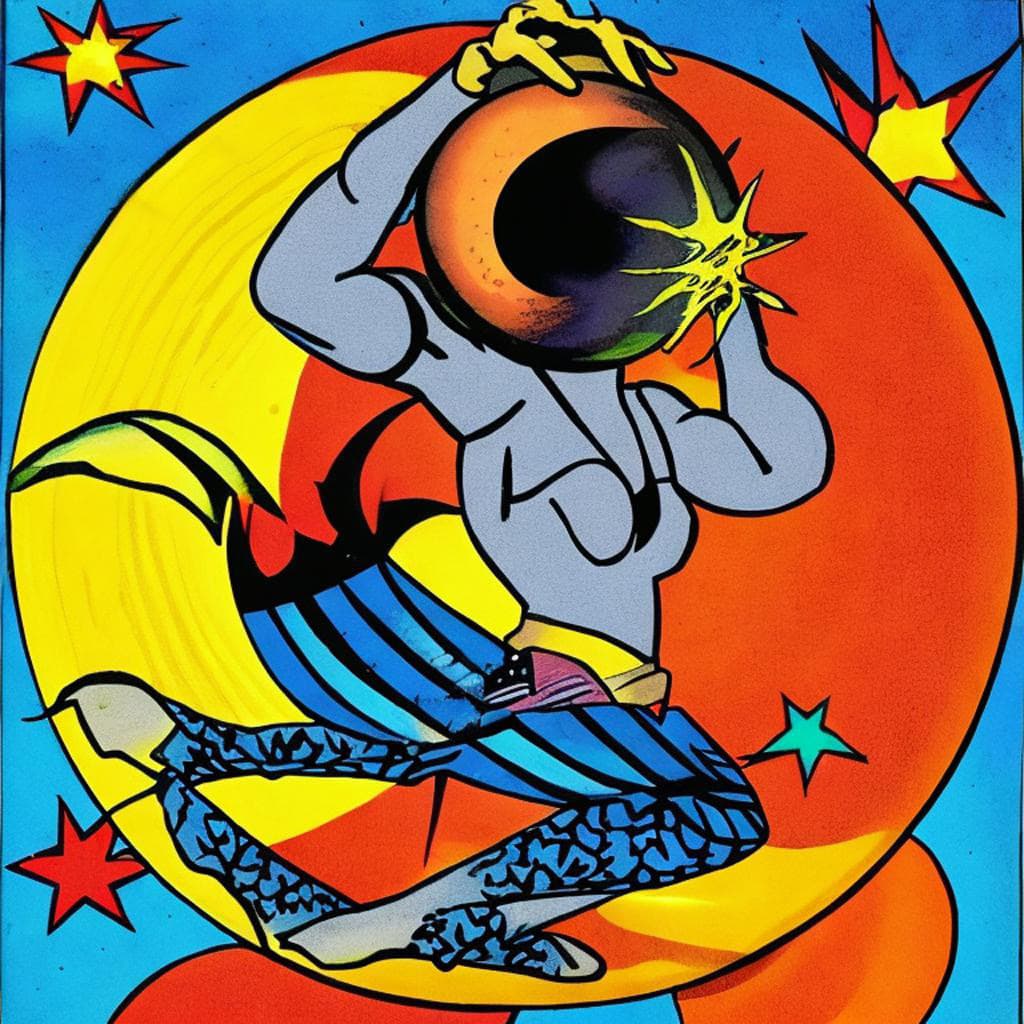
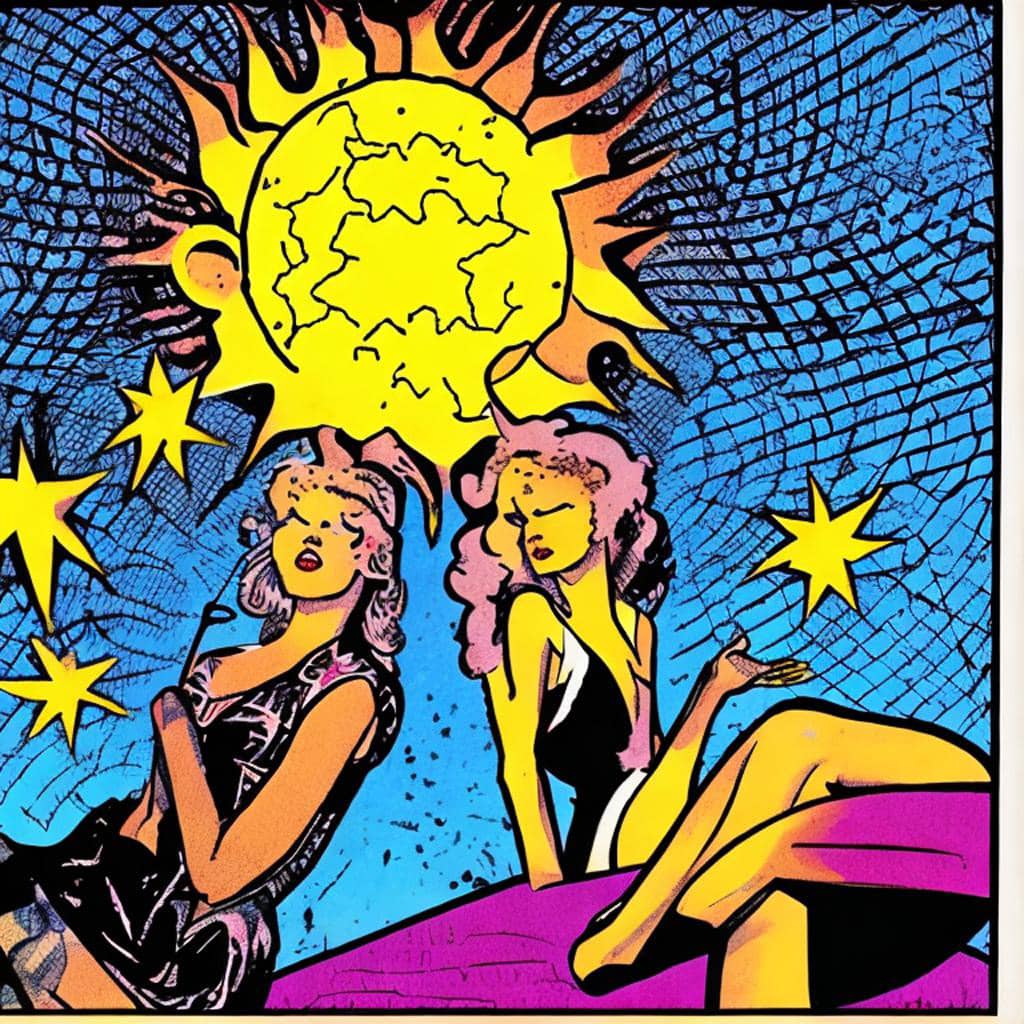
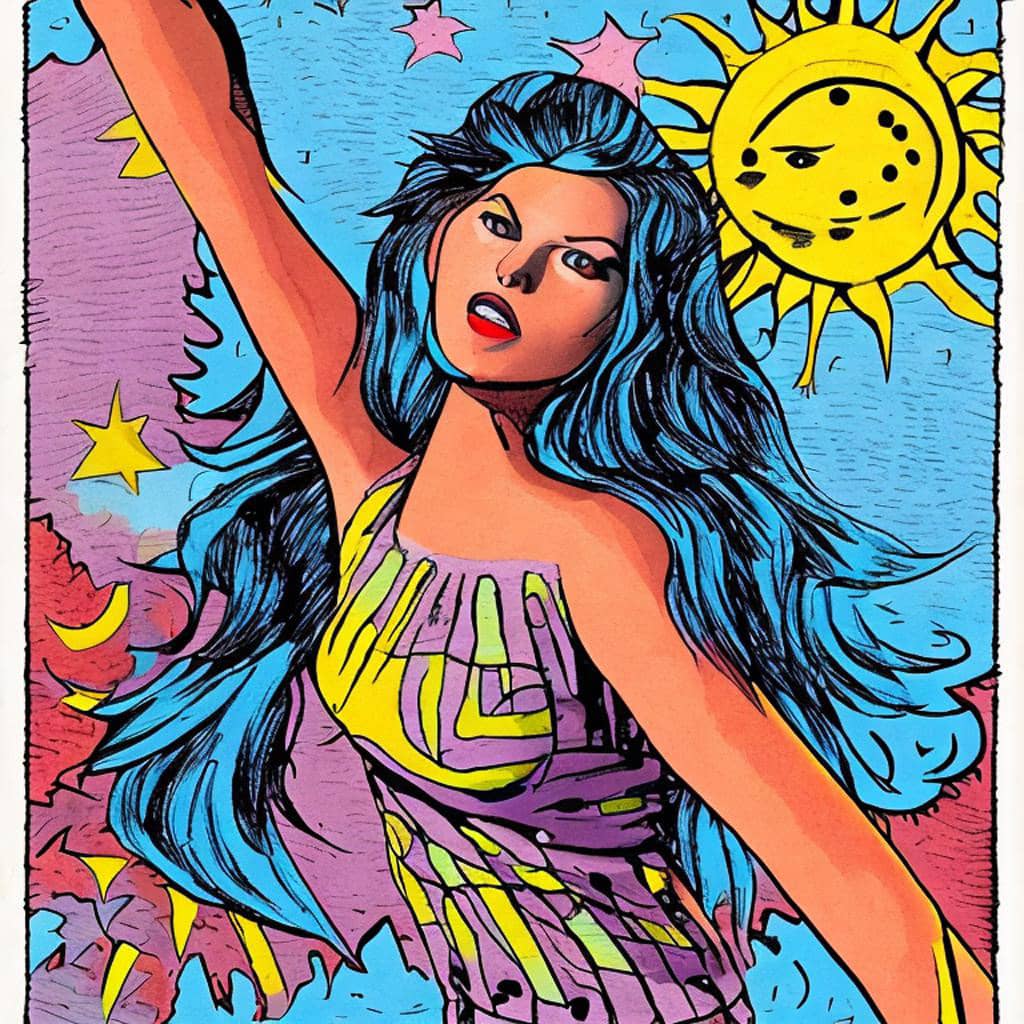
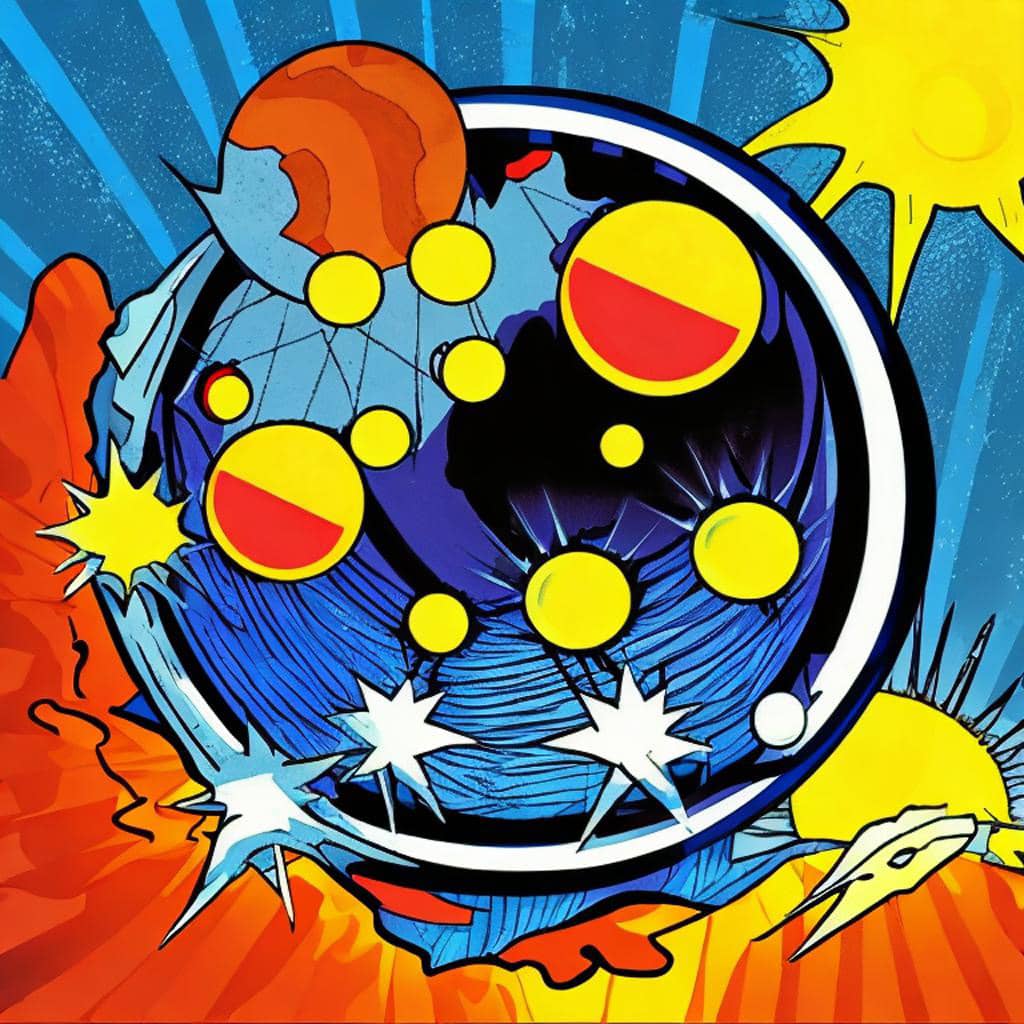
Pop Art, was one of the most important and influential art movements of the 20th century.
Pop Art emerged in the 1950s and 1960s as a response to the consumer culture and mass media that were rapidly transforming American society. The movement was characterized by its use of popular images and objects, its bright and bold colors, and its rejection of traditional artistic conventions and materials.
Pop artists sought to blur the boundaries between high art and popular culture, and to critique the commercialization and commodification of modern life. They drew inspiration from everyday objects and images, such as comic books, advertisements, and product packaging, and transformed them into works of art.
One of the most famous Pop artists was Andy Warhol, whose work came to epitomize the movement. Warhol was known for his silkscreen prints of famous figures, such as Marilyn Monroe and Elvis Presley, as well as for his depictions of consumer products, such as Campbell’s soup cans and Coca-Cola bottles.
Another prominent Pop artist was Roy Lichtenstein, who was known for his paintings and prints that mimicked the style of comic book illustrations. Lichtenstein’s works often featured bold outlines and bright, primary colors, and he drew inspiration from popular comic book characters, such as Mickey Mouse and Donald Duck.
Other notable Pop artists included Robert Rauschenberg, who incorporated found objects and images into his works, and Claes Oldenburg, who created sculptures of everyday objects, such as hamburgers and typewriters.
Pop Art was not just a visual movement, but also a cultural and social one. It reflected the changing attitudes and values of American society in the post-war era, and it challenged traditional notions of what art could be and how it should be created.
Pop Art was also closely associated with the rise of mass media and consumer culture. It was influenced by the proliferation of television, advertising, and popular music, and it reflected the ways in which these media were shaping American society.
Today, Pop Art remains one of the most important and influential art movements of the 20th century. Its legacy can be seen in the work of contemporary artists who continue to draw inspiration from popular culture and everyday objects, and in the ways in which the mass media and consumer culture continue to shape our lives.
Pop Art also remains an important reminder of the power and potential of art to challenge and critique the world around us, and to spark new ways of thinking and seeing.
Table with ten of the most famous works of Pop Art, along with their titles, subjects, and meanings
| Title | Subject | Meaning |
| Campbell’s Soup Cans | Consumer Product | A series of paintings by Andy Warhol featuring the iconic red and white soup cans, which critique the homogeneity and commercialization of modern consumer culture. |
| Marilyn Diptych | Celebrity | A silkscreen print by Andy Warhol depicting Marilyn Monroe, which explore the themes of celebrity, fame, and mortality. |
| Whaam! | Comic Book | A painting by Roy Lichtenstein that depict a fighter plane being hit by a missile, which mimic the style of comic book illustrations and challenge traditional notions of high and low art. |
| Drowning Girl | Comic Book | A painting by Roy Lichtenstein that depict a young woman crying out for help, which explore the themes of love, desire, and emotional turmoil, and use the style of comic book illustrations to create a sense of detachment and irony. |
| Green Coca-Cola Bottles | Consumer Product | A series of silkscreen prints by Andy Warhol featuring the iconic green Coca-Cola bottles, which critique the homogeneity and commercialization of modern consumer culture. |
| Flag | National Symbol | A painting by Jasper Johns that depict the American flag, which challenge traditional notions of representation and meaning, and explore the themes of identity, patriotism, and power. |
| Love | Pop Culture | A sculpture by Robert Indiana featuring the word “love,” which use bright and bold colors to celebrate the power and beauty of love, and became a symbol of the counterculture and social revolution of the 1960s. |
| Marilyn Monroe | Celebrity | A painting by Andy Warhol depicting the iconic Hollywood star, which explore the themes of celebrity, fame, and beauty, and use the repetition of the image to comment on the role of mass media in shaping our perceptions of beauty and identity. |
| Electric Chair | Death Penalty | A painting by Andy Warhol depicting an electric chair, which explore the themes of death and violence, and challenge traditional notions of representation and meaning. |
| Target | National Symbol | A painting by Jasper Johns that depict a target, which use a familiar and recognizable symbol to explore the themes of representation, meaning, and power. |
These works represent only a small portion of the vast and varied body of work created by the Pop Art movement, but they are among the most famous and influential. Each of these works reflects the bold and innovative approach of Pop Art, and its ability to challenge and critique the world around us, using the power of art and popular culture.
Shop tips
Thank you for questions, shares and comments!
Share your thoughts or questions in the comments below!
Text with help of openAI’s ChatGPT Laguage Models & Fleeky – Images with help of Picsart & MIB






